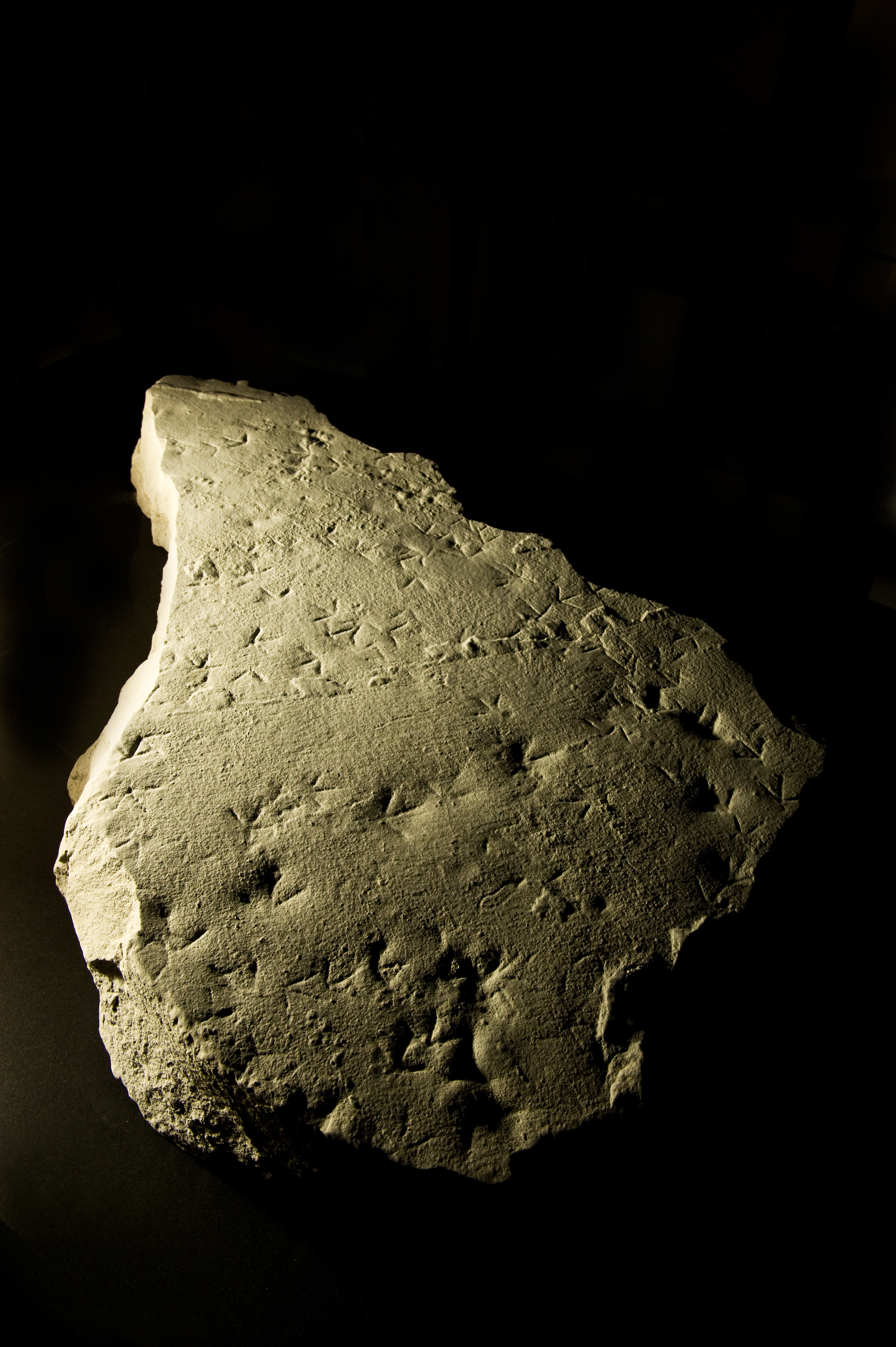Prehistory
PREHISTORY: THE SANDPIPER’S FOOTSTEPS
We received a precious gift from mother earth as we created an underground cave on our hillside property. A 2’x3’ chunk of sandstone fell from the ceiling, revealing footsteps of the ancient past: impressed on the stone were the fossilized footprints of sandpiper shorebirds, hidden beneath layers upon layers of soil and volcanic ash deposited over millenia.
“The hill actually began as a shoreline millions of years ago,” says Tom Porter, “Over the millennia it was uplifted into the hills above our vineyard, and then much later collapsed downhill to its present location.”
 The fossilized footsteps of our sandpiper are likely from the Eocene or Miocene epoch—each of these periods reaching back millions of years. During the Eocene epoch, 35 to 55 million years ago, the earth was the warmest it has ever been. Many of the birds we know today began to develop from their more primitive ancestors. Early, small forms of modern mammals, including primates, were common, and pythons and turtles were abundant. The seas teemed with fish and the first marine mammals appeared. During that time the mountains here in the western U.S. were created, and large, subtropical and deciduous forests covered most of North America. The end of the Eocene epoch was marked by an incredible number of extinctions called the “Grande Coupoure” or “great break”. Scientists hypothesize this mass extinction was due to a number of events including; glaciation, an abrupt drop in sea level due to climate change, and impacting bodies - one that struck in Siberia and one that struck in Chesapeake Bay.
The fossilized footsteps of our sandpiper are likely from the Eocene or Miocene epoch—each of these periods reaching back millions of years. During the Eocene epoch, 35 to 55 million years ago, the earth was the warmest it has ever been. Many of the birds we know today began to develop from their more primitive ancestors. Early, small forms of modern mammals, including primates, were common, and pythons and turtles were abundant. The seas teemed with fish and the first marine mammals appeared. During that time the mountains here in the western U.S. were created, and large, subtropical and deciduous forests covered most of North America. The end of the Eocene epoch was marked by an incredible number of extinctions called the “Grande Coupoure” or “great break”. Scientists hypothesize this mass extinction was due to a number of events including; glaciation, an abrupt drop in sea level due to climate change, and impacting bodies - one that struck in Siberia and one that struck in Chesapeake Bay.During the much more recent Miocene epoch-5 to 20 million years ago--many of the plants and animals would be recognizable to humans today. All modern bird families were present, including crows, owls, and ducks. Carcharadon megalodon, a giant cousin of the great white shark, terrorized the seas, where kelp forests proliferated. On land, grasslands replaced forests, and large herbivores grazed over much of North America and Europe, prey for carnivores such as wolves and big cats. South and North America were not connected by land, and Florida was completely submerged. India continued to grind into Asia, causing the Himalayas to reach great heights, and the Andes rose along the entire western length of South America. Cooling climates signaled the end of the Miocene epoch.
